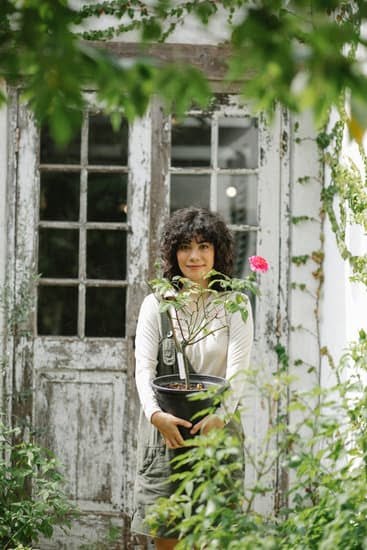Raised garden bed design layout plays a crucial role in creating a productive, beautiful, and accessible garden space. Whether you have a limited backyard or ample space, understanding the importance of a well-designed layout can enhance the overall functionality and aesthetics of your garden beds. From maximizing productivity to improving accessibility, a thoughtfully planned design can transform your gardening experience.
A raised garden bed design layout refers to the arrangement and organization of individual beds within your garden space. It involves considering factors such as size, shape, bed arrangement, and utilization of available space. By strategically planning your layout, you can optimize sunlight exposure, create efficient pathways for easy access, and ensure proper drainage for healthy plant growth.
There are numerous benefits to having a well-designed raised garden bed layout. Firstly, it enhances productivity by allowing for efficient usage of soil and maximizing planting space. Additionally, a good design improves plant health as it allows for better airflow and water drainage. Moreover, an aesthetically pleasing design can transform your garden into a visually appealing outdoor oasis that brings joy and satisfaction.
In this article, we will delve into the importance of various aspects of raised garden bed design layout. We will explore how to choose the right location for your beds based on factors like sunlight exposure and soil quality. We will also discuss the principles behind designing functional and beautiful layouts while maximizing space utilization. Furthermore, we will provide insights into popular layout options and variations to inspire you in planning your own unique garden bed design.
Read on to discover how an effective raised garden bed design layout contributes to increased productivity, improved aesthetics, and enhanced accessibility in your gardening endeavors. With the knowledge gained from this article, you’ll be equipped to create a thriving garden that yields bountiful harvests while adding visual appeal to your outdoor space.
Choosing the Right Location for Your Raised Garden Bed
When it comes to designing your raised garden bed layout, one of the first and most important decisions you’ll need to make is selecting the right location. The location you choose will have a significant impact on the success and productivity of your garden. Therefore, it’s essential to consider several factors to ensure optimal growing conditions for your plants.
One crucial factor to consider when choosing a location for your raised garden bed is sunlight. Most vegetable plants require at least six hours of direct sunlight each day to thrive. Therefore, it’s important to select a spot in your yard or garden where your plants can receive adequate sunlight. Observe your chosen area throughout the day and take note of any areas shaded by trees, buildings, or other structures that could hinder sunlight exposure.
Another factor to consider is soil quality and drainage. It’s important to choose an area with well-draining soil as excessive water can lead to root rot and other plant diseases. If your soil tends to hold water or has poor drainage, you may need to implement specific techniques such as adding compost, raised beds, or creating proper irrigation systems.
Lastly, accessibility is another aspect that should be taken into consideration when selecting the location for your raised garden bed. Choose a spot that is easily accessible so that you can tend to your plants without difficulty. Consider factors such as proximity to water sources and how far you’ll need to carry tools and supplies.
By taking these factors into account when choosing the location for your raised garden bed, you’ll be setting yourself up for success. Ensuring adequate sunlight exposure, proper drainage, and easy accessibility will lay the foundation for healthy plant growth and bountiful harvests in the seasons to come.
Design Principles
When it comes to designing a raised garden bed, it is important to consider both functionality and aesthetics. A well-designed layout not only maximizes productivity but also enhances the beauty of your garden. In this section, we will discuss some key design principles that can help you create a functional and beautiful raised garden bed layout.
One important principle to consider is the size, shape, and arrangement of your beds. The size of your garden beds should be appropriate for the plants you want to grow and the space available in your yard or garden. It is also crucial to leave enough room between beds for easy access and maintenance. Additionally, considering the shape of your beds can add visual interest to your garden design.
Another design principle to keep in mind is maximizing space utilization and efficiency. This involves techniques such as intercropping, companion planting, and vertical gardening. Intercropping involves planting fast-growing crops alongside slower-growing ones to make the most of limited space. Companion planting involves growing mutually beneficial plants together for better pest control or improved nutrient uptake. Vertical gardening utilizes trellises or stakes to support vining plants, allowing you to grow more crops in a smaller area.
Lastly, aesthetics play an important role in creating a beautiful raised garden bed layout. Consider color combinations that are visually pleasing and complement each other. You can also incorporate architectural elements such as trellises or decorative borders into your design. Creating different heights by using tiered beds can add depth and dimension to your garden.
By following these design principles, you can create a raised garden bed layout that is both functional and aesthetically pleasing. Not only will this ensure optimal plant growth and productivity, but it will also enhance the overall beauty of your garden.
| Design Principles | Data |
|---|---|
| Size, shape, and arrangement of beds | Consider appropriate size and shape for plants and space availability. Leave enough room for easy access and maintenance. |
| Maximizing space utilization and efficiency | Use intercropping, companion planting, or vertical gardening techniques to make the most of limited space. |
| Aesthetics | Consider color combinations, architectural elements, and different heights for a visually pleasing design. |
Planning Your Garden Bed Layout
Once you have chosen the right location for your raised garden bed, it’s time to start planning the layout. The design of your garden bed can greatly impact its functionality and aesthetics. There are various layout options and variations to consider, allowing you to create a design that suits your needs and preferences.
One popular layout option is the rectangular design. This design is simple yet versatile, as it allows for easy access and efficient use of space. Rectangular garden beds are great for growing a variety of plants and can be easily divided into sections for different crops or companion planting.
Another option to consider is the square design. Square garden beds are convenient if you have limited space or want to maximize efficiency. They allow for easy rotation of crops and ensure even sunlight exposure throughout the bed.
For those looking for a more unique look, L-shaped garden beds may be the way to go. This layout is perfect for fitting into corners or along fences, making use of unused spaces in your yard or garden. L-shaped beds provide interesting angles and can create visual interest in your overall garden design.
If you want to take your raised bed gardening to the next level, there are also variations worth exploring. Tiered beds are perfect for sloping terrains or adding dimensionality to flat spaces. These beds create multiple levels, allowing you to grow a variety of plants with different light requirements.
Keyhole gardens are another variation that combines both a raised bed structure and composting system within one design. This circular shape with a center opening creates an easily accessible point for adding compost materials while maximizing planting area around it.
Vertical gardening is yet another exciting option that utilizes vertical space efficiently. By incorporating trellises, arbors, or hanging baskets in your raised garden bed design, you can maximize planting space while adding visual appeal.
When planning your garden bed layout, it’s important to consider not only the aesthetics but also factors such as sunlight exposure, accessibility, and your gardening goals. It’s also helpful to sketch out your layout on paper or use online garden planning tools for a visual representation before starting.
Having a well-planned garden bed layout ensures that you make the most of your space and allows for efficient gardening practices. With the right layout, you can create an organized and flourishing garden that brings beauty and abundance to your outdoor space.
Companion Planting
One of the key benefits of companion planting is pest control. Certain plants naturally repel pests or attract beneficial insects that prey on common garden pests. For example, marigolds are known to repel aphids and nematodes when planted with vegetables like tomatoes or peppers. Meanwhile, planting herbs such as basil or dill near your lettuce can attract predatory insects like ladybugs or lacewings that feed on aphids.
In addition to pest control, companion planting also improves soil fertility and nutrient uptake. Some plants have the ability to fix nitrogen from the air into a form usable by other plants. This process helps enrich the soil and provide essential nutrients for nearby crops. For example, legumes like peas or beans have nitrogen-fixing capabilities and are often paired with nitrogen-loving plants such as corn or squash.
When planning a raised garden bed layout, incorporating companion planting principles can greatly benefit your overall garden health and productivity. By carefully selecting compatible plant combinations and arranging them strategically within your bed design, you can create a harmonious ecosystem that promotes thriving plants and minimizes the need for chemical interventions.
Tips for incorporating companion planting into raised garden bed layouts include grouping compatible plants together such as tall crops with shorter companions to provide shade or wind protection. Additionally, consider interplanting aromatic herbs or flowers among your vegetables to help deter unwanted insects while attracting pollinators.
By embracing the concept of companion planting in your raised garden bed design layout, you can cultivate an environment where diverse plant species work together synergistically for optimal health and productivity. With the right combinations, your garden will not only be a thriving oasis but also a sustainable and eco-friendly space.
Designing for Accessibility
Gardening is a hobby and activity that brings joy and satisfaction to many people. However, it is important to ensure that gardening is accessible to everyone, including individuals with physical limitations. Designing raised garden beds for accessibility is crucial in creating a garden space that can be enjoyed by people of all abilities.
When designing a garden bed for accessibility, there are several factors to consider. First, the height of the bed should be appropriate for individuals using wheelchairs or those who have difficulty bending or kneeling.
A raised garden bed that is too high can make it challenging for someone with limited mobility to reach and tend to their plants. It is recommended to have the top of the bed at a height that allows comfortable access and use of tools from a seated position.
Another important consideration in designing an accessible garden bed is pathways and access routes. The paths surrounding the beds should be wide enough to accommodate wheelchairs or other mobility aids, such as walkers or crutches. Additionally, the surface should be firm and even, allowing for easy maneuverability.
To make the gardening experience more enjoyable for individuals with physical limitations, it is also beneficial to incorporate features such as vertical gardening or trellises. These allow plants to grow vertically, reducing the need for bending or reaching low to care for them.
By considering these design elements and incorporating them into your raised garden bed layout, you can create a garden space that is inclusive and accessible to people of all abilities.
| Design Consideration | Importance |
|---|---|
| Appropriate Height | Allows comfortable access from seated position |
| Wide Pathways | Able to accommodate wheelchairs and mobility aids |
| Accessible Surfaces | Firm and even for easy maneuverability |
| Vertical Gardening | Reduces the need for bending or reaching low |
Soil and Drainage Considerations
When it comes to designing a raised garden bed, one critical aspect that should never be overlooked is soil and drainage considerations. Creating the perfect environment for optimal plant growth is essential to ensure your garden thrives and produces bountiful harvests.
To start, it’s crucial to understand the significance of appropriate soil composition and drainage. The soil in your raised beds should have good drainage capabilities while still retaining enough moisture for plants to thrive. It should be well-aerated, allowing roots to breathe and preventing waterlogging, which can lead to root rot and other issues.
There are several methods for improving soil quality, aeration, and water drainage in your garden beds. One effective technique is adding organic matter such as compost or aged manure to enrich the soil with nutrients while improving its structure. Organic matter also helps retain moisture in sandy soils or improves drainage in heavy clay soils.
Another consideration for ensuring optimal plant growth is testing the pH of your soil. Different plants thrive in different pH levels, so it’s essential to know the acidity or alkalinity of your soil.
You can purchase a pH testing kit from a garden center or send a sample of your soil to a laboratory for analysis. Based on the results, you can adjust the pH by adding amendments like lime or sulfur to create an ideal growing environment for your plants.
By paying attention to important factors like soil composition, drainage, and pH levels, you can set the foundation for successful plant growth in your raised garden bed. Taking these considerations into account will help ensure that your plants receive the necessary nutrients, oxygen, and moisture they need to flourish. With proper care, you’ll be rewarded with healthy plants that produce an abundant harvest year after year.
- Ensuring good drainage through well-aerated soil
- Adding organic matter such as compost or aged manure
- Testing and adjusting soil pH for optimal plant growth.
Maintaining Your Raised Garden Bed Design Layout
Once you have carefully planned and implemented your raised garden bed design layout, it is important to maintain it throughout the seasons to ensure optimal plant growth and productivity. Proper maintenance will help you preserve the layout’s functionality and aesthetic appeal, as well as prevent potential issues such as weeds, pests, and nutrient deficiency. In this section, we will provide you with some helpful tips on how to care for your raised garden bed throughout the year.
One essential aspect of maintaining your raised garden bed design layout is proper mulching. Mulch not only helps conserve moisture in the soil but also suppresses weed growth and regulates soil temperature. In spring, apply a layer of organic mulch such as wood chips or straw around your plants to retain moisture during the warmer months. As summer approaches, make sure to replenish the mulch layer to continue protecting plants from heat stress and inhibit weed growth.
Fertilizing your plants regularly is another crucial maintenance task. Start by testing your soil’s nutrient levels and pH in early spring to determine if any amendments are needed. Based on the results, choose an appropriate organic fertilizer or compost that suits your plants’ needs.
Apply fertilizer according to the product instructions, considering factors like plant variety and growth stage. Remember to monitor plant health throughout the season and make necessary adjustments in fertilization if yellowing leaves or stunted growth occur.
Aside from mulching and fertilizing, keeping a watchful eye for pests is essential for maintaining a healthy raised garden bed. Regularly inspect your plants for signs of insect damage or disease symptoms. If pests are present, consider using integrated pest management techniques such as hand-picking insects or introducing beneficial insects that prey on pests. Additionally, ensure proper hygiene by removing fallen plant debris or dead foliage promptly, as they can harbor pests or disease-causing organisms.
By following these seasonal tips and care practices for your raised garden bed design layout, you can ensure that your plants thrive and your garden remains visually appealing throughout the year. Regular maintenance will not only support plant health but also help you enjoy a bountiful harvest and the satisfaction of a well-maintained garden. So put on your gardening gloves and get ready to nurture your raised bed design into a flourishing and productive oasis.
Conclusion
In conclusion, designing a beautiful and productive raised garden bed requires careful consideration and planning. The importance of a well-designed layout cannot be overstated, as it not only enhances the aesthetics of your garden but also improves productivity and accessibility.
By choosing the right location for your raised garden bed, considering factors such as sunlight, soil quality, and drainage, you can ensure optimal growing conditions for your plants. This will result in healthier plants and higher yields. Additionally, implementing key design principles such as the size, shape, and arrangement of beds can maximize space utilization and efficiency.
There are various layout options and variations to choose from, including rectangular, square, L-shaped designs, tiered beds, keyhole gardens, and vertical gardening. These options provide flexibility for different preferences and needs. By incorporating companion planting into your raised garden bed layout, you can maximize plant health and productivity through mutually beneficial pairings.
It is important to design for accessibility in order to make gardening enjoyable for everyone. Tips on accommodating individuals with physical limitations include using wheelchair-accessible designs and creating beds that allow for easy reach. Ensuring proper soil composition and drainage is crucial for optimal plant growth. Testing soil pH and incorporating organic matter are effective ways to maintain healthy plants.
Lastly, maintaining your raised garden bed design layout is essential for long-term success. Proper mulching, fertilizing, pest control measures, and regular maintenance throughout the seasons will help preserve the beauty and functionality of your garden bed.
In summary, designing a beautiful and productive raised garden bed involves taking into account various factors such as location selection, design principles, companion planting techniques, accessibility considerations, soil composition, drainage requirements,and ongoing maintenance. By applying these ideas to their own gardens,hobbyists can enjoy bountiful harvests while experiencing joy from their creations year after year.

Welcome to my gardening blog! I am passionate about plants and enjoy sharing my knowledge and experiences with others. In this blog, I will write about everything related to gardening, from tips on how to get started to updates on my own garden projects.





